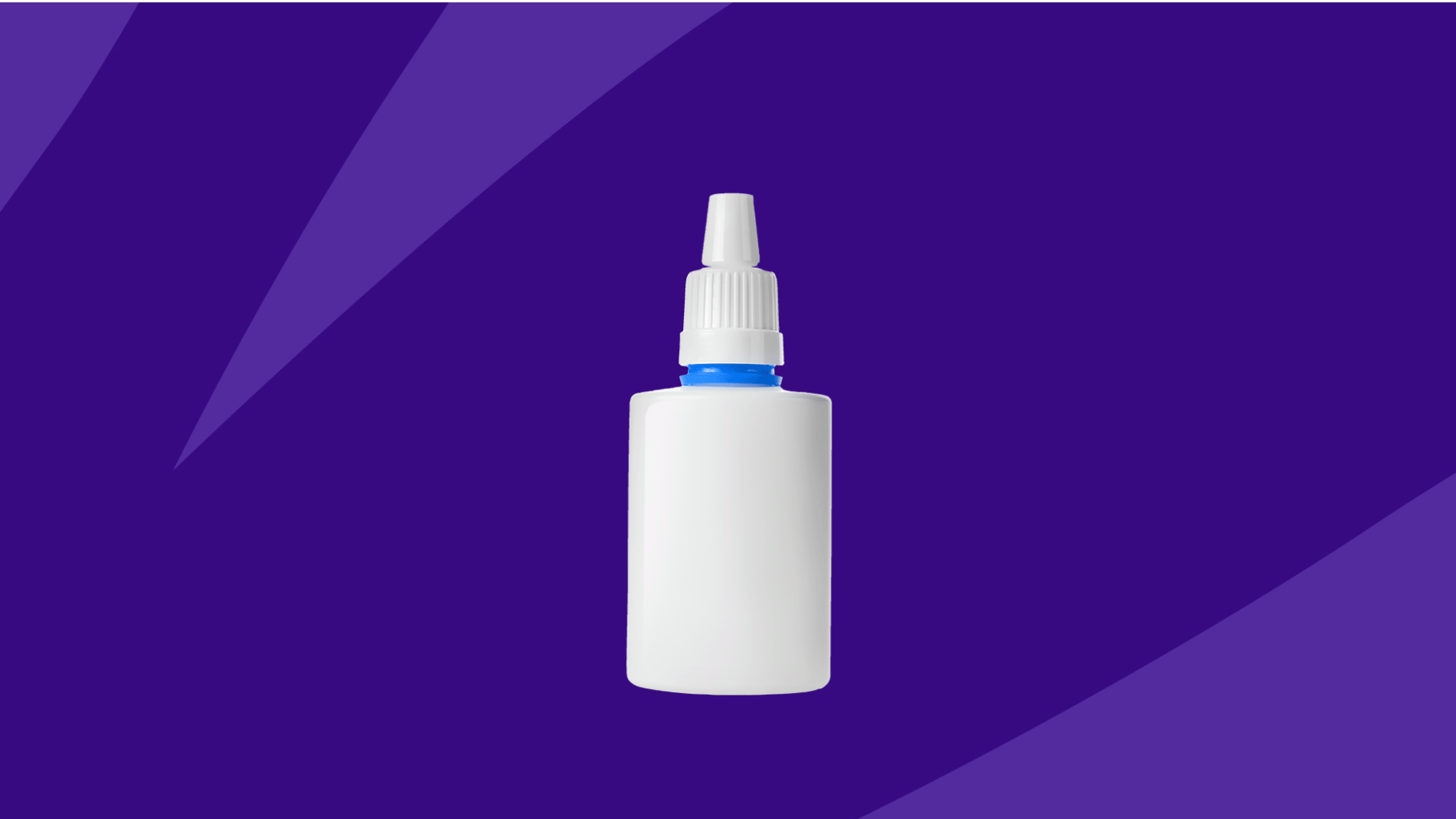Compare latanoprost alternatives | Xelpros | Zioptan | Travatan | Timoptic | Alphagan-P | Natural alternatives | How to switch meds
Latanoprost is the generic name of an eye drop that is used to lower eye pressure in people with open-angle glaucoma (the most common form of glaucoma) or ocular hypertension. Latanoprost is also available as brand name medications, Xalatan solution and Xelpros emulsion. This eye drop belongs to a group of medications called prostaglandin analogs and works to reduce elevated intraocular pressure (IOP), which is the fluid pressure inside the eye.
Increased fluid pressure in conditions like glaucoma and ocular hypertension can cause damage to the eye and lead to reduced vision. Prostaglandin analogs are often the preferred initial treatment for open-angle glaucoma. Latanoprost is used in each affected eye once daily in the evening.
RELATED: What is latanoprost? | latanoprost coupons
While an effective treatment for some people, latanoprost may not be the best and safest eye drop for all people with either glaucoma or ocular hypertension. Some people with elevated eye pressure may require more than one medication and prefer the convenience of a combination eye drop with two medications. Additionally, some people may want to avoid the side effects of latanoprost such as increased pigmentation/darkening of the iris (a change in eye color) and eyelash changes including increased length and thickness. People may also need to avoid preservatives found in eye drops, including generic latanoprost that contains the preservative benzalkonium chloride (BAK). Some alternatives are available as preservative-free, single-use containers that can cause less inflammation of the eyes and be beneficial for those who experience dry eyes.
RELATED: Can medication change your eye color?
What can I take in place of latanoprost?
There are other FDA-approved options available to treat glaucoma and ocular hypertension that do not improve with latanoprost. There are a variety of single medication eye drops, combination eye drops with two medications, and oral medications. Like latanoprost ophthalmic solution, some alternatives have a convenient dosing schedule of once daily, while others may be dosed two to three times daily. While many glaucoma medications have common side effects, some alternatives have unique adverse effects that should be considered before switching from latanoprost.
RELATED: What it’s like living with glaucoma
Compare latanoprost alternatives |
|||
|---|---|---|---|
| Drug name | Uses | Dosage | Savings options |
| Latanoprost | Open-angle glaucoma, ocular hypertension | Place 1 drop into affected eyes once daily in the evening | Latanoprost coupons |
| Alphagan-P (brimonidine tartrate) | Open-angle glaucoma, ocular hypertension | Place 1 drop into affected eyes three times daily | Alphagan-P coupons |
| Betoptic-S (betaxolol hydrochloride) | Open-angle glaucoma, ocular hypertension | Place 1 to 2 drops into affected eyes twice daily | Betoptic-S coupons |
| Lumigan (bimatoprost) | Open-angle glaucoma, ocular hypertension | Place 1 drop into affected eyes once daily in the evening | Lumigan coupons |
| Rhopressa
(netarsudil) |
Open-angle glaucoma, ocular hypertension | Place 1 drop into affected eyes once daily in the evening | Rhopressa coupons |
| Rocklatan (netarsudil/latanoprost) | Open-angle glaucoma, ocular hypertension | Place 1 drop into affected eyes once daily in the evening | Rocklatan coupons |
| Timoptic
(timolol maleate) |
Open-angle glaucoma, ocular hypertension | Place 1 drop into affected eyes twice daily | Timoptic coupons |
| Travatan Z
(travoprost) |
Open-angle glaucoma, ocular hypertension | Place 1 drop into affected eyes once daily in the evening | Travatan Z coupons |
| Trusopt (dorzolamide) | Open-angle glaucoma, ocular hypertension | Place 1 drop into affected eyes three times daily | Trusopt coupons |
| Xelpros (latanoprost) | Open-angle glaucoma, ocular hypertension | Place 1 drop into affected eyes once daily in the evening | Xelpros coupons |
| Zioptan
(tafluprost) |
Open-angle glaucoma, ocular hypertension | Place 1 drop into affected eyes once daily in the evening | Zioptan coupons |
Other alternatives to latanoprost
For people seeking other alternative IOP-lowering pharmaceuticals, there are a variety of brand name eye drops, generic eye drops, combination eye drops, and oral medications.
Ophthalmic Alpha Adrenergic Receptor Agonists
- Iopidine (apraclonidine)
Ophthalmic Beta Blockers
- Betagan (levobunolol hydrochloride)
- Betimol (timolol)
- Carteolol hydrochloride
- Istalol (timolol maleate)
- Timoptic in Ocudose (timolol)
Ophthalmic Carbonic Anhydrase Inhibitors
- Azopt (brinzolamide)
Oral Carbonic Anhydrase Inhibitors
Ophthalmic Prostaglandins
Ophthalmic Cholinergic Agonists/Miotic Agents
- Isopto Carpine (pilocarpine hydrochloride)
- Miostat (carbachol)
- Phospholine iodide (echothiophate iodide)
- Vuity (pilocarpine hydrochloride)
Ophthalmic Combinations
- Combigan (brimonidine tartrate/timolol maleate)
- Cosopt (dorzolamide hydrochloride/timolol maleate)
- Cosopt PF (dorzolamide and timolol)
- Simbrinza (brinzolamide/brimonidine tartrate)
Top 5 latanoprost alternatives
The following are some of the most common alternatives to latanoprost.
1. Xelpros (latanoprost)
Xelpros is a brand name medication that also contains latanoprost, however, it is the first and only benzalkonium chloride (BAK)-free form of latanoprost. Instead, Xelpros contains potassium sorbate 0.47% as a preservative. Xelpros can be used to manage open-angle glaucoma and ocular hypertension. Like generic latanoprost, Xelpros is dosed once daily in the evening and has similar side effects. Xelpros is a well-suited alternative if BAK-free treatment is required, however it currently is not available as a generic. Xelpros may be better tolerated than eye drops that contain preservatives like BAK and lead to better adherence to treatment.
2. Zioptan (tafluprost)
Zioptan is a brand name medication that is now available as a generic called tafluprost. Zioptan is another prostaglandin analog used to treat open-angle glaucoma and ocular hypertension and has similar side effects as latanoprost. Zioptan is unique as it comes as preservative-free, single-use containers that are associated with less inflammation of the eyes and may be beneficial for those who experience dry eyes. This alternative may be best suited for people who have success with prostaglandin analogs and who experience irritation, redness and overall discomfort with preservatives.
RELATED: Zioptan alternatives: What can I take instead of Zioptan?
3. Travatan Z (travoprost)
Travatan Z is a brand name medication that is available as a generic called travoprost. Travatan Z can be used to manage open-angle glaucoma and ocular hypertension. Like latanoprost, this medication works to lower eye pressure as a prostaglandin analogue. Travatan Z is dosed once daily in the evening and has similar side effects to latanoprost. While this eye drop is not preservative-free, it does not contain the BAK preservative found in latanoprost. Travatan Z contains the preservative sofZia that was designed to help lessen the chance of conjunctival hyperemia (eye inflammation and redness) and keratopathy (disorder of the outer lens of the eye). Travatan Z may be useful for people who are sensitive to the preservative BAK. Travatan Z may be a well-suited alternative for those who are seeking a BAK-free eye drop with a more affordable generic option.
4. Timoptic (timolol maleate)
Timoptic is a brand name medication that is available as a generic called timolol maleate. Timoptic can be used to manage ocular hypertension or open-angle glaucoma. This medication works to lower eye pressure as a beta blocker. Ophthalmic beta blockers can be used as initial therapy for open-angle glaucoma or used if prostaglandin analogs, like latanoprost, are ineffective. Timoptic is dosed twice daily and should not be used in people who have asthma, chronic obstructive pulmonary disease (COPD), sinus bradycardia, second or third degree atrioventricular block, overt cardiac failure, or cardiogenic shock. Timoptic is also available as a preservative-free formulation called Timoptic in Ocudose and may be useful for people who are sensitive to the preservatives often found in eye drops.
5. Alphagan-P (brimonidine tartrate)
Brand name Alphagan-P is available as generic brimonidine. Alphagan-P can also be used to manage ocular hypertension or open-angle glaucoma. This medication works to lower eye pressure as an alpha adrenergic agonist. This category of eye drops has similar effectiveness as beta blockers in lowering intraocular pressure (IOP) in open-angle glaucoma, but they are associated with a number of eye side effects including allergic conjunctivitis (eye inflammation), eye redness, and itchy eyes. Alphagan-P may be a suitable alternative for people who are unable to tolerate a prostaglandin analog or beta blocker, or require further control of IOP.
Natural alternatives to latanoprost
Alternative remedies for latanoprost include supplements, lifestyle changes, and diet modifications to keep the eyes healthy. According to the American Optometric Association, proper nutrition for eye health includes a diet that has zinc, copper, essential fatty acids, lutein, vitamin C, vitamin E, and vitamin A. The oral supplement, PreserVision, includes many of these nutrients and is available as an over-the-counter medication.
Omega-3 supplementation has evidence of lowering intraocular pressure (IOP). A 2018 study determined omega-3 supplementation for 3 months significantly reduced IOP in normotensive (normal pressure) adults with an average reduction of 8%. Omega-3 supplementation is available over-the-counter in a few formulations including capsules and softgels. The most common symptom causing people to stop taking fish oil supplements is a “fishy taste” following burping. Freezing the fish oil, switching to a different formulation, taking with meals, or changing the time of day the supplement is taken may minimize this symptom in some people.
Lifestyle modifications include incorporating physical exercise into a routine that can have a positive impact on reducing some glaucoma risk factors such as high blood pressure and diabetes. Diet modifications include reducing caffeine intake as caffeine may have an impact on raising intraocular eye pressure.
RELATED: Eye health 101: How to protect vision and keep your eyes healthy
How to switch to a latanoprost alternative
1. Discuss all health conditions with a healthcare provider
Before switching from latanoprost to an alternative, it’s important the prescribing doctor has reviewed all health conditions. Alternatives may have serious side effects, precautions, or drug interactions that need to be avoided. It’s best to seek medical advice prior to changing medication therapy.
2. Do not suddenly stop taking latanoprost
Before stopping latanoprost, make an eye care plan with the prescribing doctor to avoid sudden increases in intraocular pressure. Once a plan has been established, latanoprost can be safely discontinued and replaced with the new treatment.
3. Determine if a preservative-free eye drop is needed
Preservatives play an important antimicrobial role in multi-dose eye drops, but they may also cause irritation, redness and overall discomfort. People with conditions such as dry eye disease or Sjogren’s Syndrome may need to avoid eye drops that contain preservatives. Additionally, people who have had allergic reactions to preservatives in eye drops should use preservative-free dosage forms. It’s best to have a discussion with an ophthalmologist to determine if preservative-free eye drops are the best treatment.
4. Continue proper eye drop administration
Using eye drops correctly ensures proper drug administration and absorption into the eye. It’s important to make sure contact lenses are taken out of the eye prior to using eye drops, unless the eye doctor has instructed to keep them in. Make sure hands are washed and tilt the head backward while sitting, standing, or lying down. Place the index finger below the lower lid to gently pull down and form a pocket, look up, and squeeze drop into the pocket. It’s important to keep the eye closed after the drop has been administered. Try to keep the eye closed for one to three minutes without blinking. If using more than one drop or more than one type of eye drop, wait five minutes before putting the next drop in. This will keep the first drop from being washed out by the second drop before it has had time to work.
If an eye ointment is used, place a 1/4 inch line of ointment into the lower lid pouch. If using an eye drop and an eye ointment at the same time, use the eye drop first, wait a few minutes, and then use the ointment. Eye ointments typically cause blurred vision that is normal and should go away in a few minutes.
5. Keep and maintain eye doctor appointments
People with glaucoma and ocular hypertension should be regularly assessed by their eye doctor. At these appointments, the intraocular eye pressure (IOP) can be measured to determine the effectiveness of the medication regimen. It’s important for people managing their IOP to be aware of the normal eye pressure range (12-22 mm Hg) and the high pressure range (greater than 22 mm Hg). Vision tests may also be performed for glaucoma patients to check for any loss of sight or optic nerve damage.











